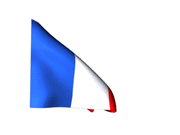
Attention, pour valider cette cache, vous avez besoin d'un appareil compatible avec la balise Chirp .
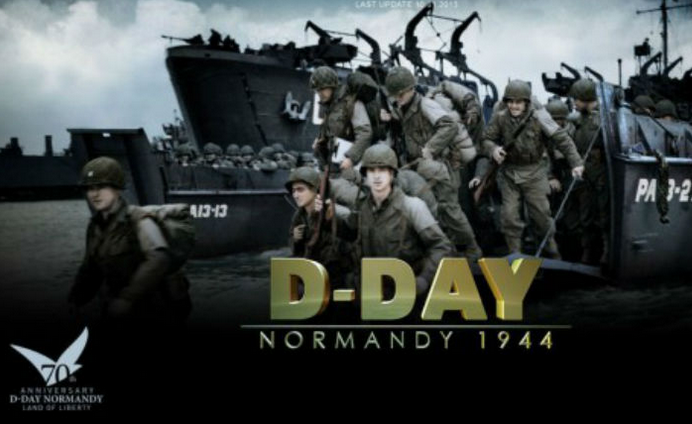
Le 6 juin 1944, les Alliés débarquèrent sur la côte normande. Des unités britanniques atteignirent la périphérie de Bayeux à la tombée de la nuit et le lendemain la ville devint la première ville de France à être libérée. Les installations médicales furent rapidement établies à proximité afin de soigner les hommes blessés dans les combats et l'Armée Britannique construisit une rocade autour de la ville. Le boulevard Fabian Ware qui longe le cimetière, Porte le nom du fondateur de la War Graves Commission.

Le cimetière militaire de Bayeux est le plus grand cimetière du Commonwealth de la Seconde Guerre Mondiale en France. Il contient les tombes de soldats qui avaient tout d'abord été enterrés sur les champs de bataille et de ceux qui succombèrent à leurs blessures dans les hôpitaux militaires de Bayeux. Commencé pendant la guerre, il fut terminée en 1952 et est maintenant la dernière demeure de plus de 4100 soldats du Commonwealth, dont prêt de 340 demeurent non identifiés. Environ 500 soldats d'autres Nationalités, dont plus de 460 Allemands, y sont également enterrés.

En face du cimetière se trouve le Mémorial de Bayeux, qui porte le nom de plus de 1800 hommes et femmes des forces terrestres du Commonwealth qui tombèrent au combat pendant l'Opération Overlord et qui n'ont pas de sépulture connue. Ils perdirent la vie durant les débarquements, lors des combats violents en Normandie et lors de l'avancée vers la Seine en août 1944. Le cimetière et le mémorial furent tous deux conçus par Philip Hepworth. L'inscription en latin signifie : « Nous, autrefois conquis par Guillaume, avons maintenant libéré le pays natal du Conquérant. »
Opération Overlord : la bataille de Normandie
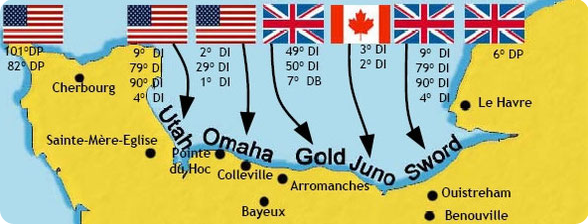
� Les forces du Commonwealth débarquèrent sur les plages Gold, Juno et Sword de bonne heure le matin du Jour J dans une mer agitée et sur un sable qui rendait la progression difficile, soutenues par un puissant barrage de navires de guerre, de roquettes lancées depuis les barges de débarquement et par les bombardements des forces aériennes. Les premières vagues de troupes d'assaut se heurtèrent à des barbelés, des obstacles sur la plage, des mines et le tir des mitrailleuses provenant des propriétés situées en bord de mer et des blockhaus en béton. Après avoir réussi à franchir les plages en se battant, les soldats dans d'infanterie et les équipages des chars continuèrent le combat d'une maison à l'autre dans les villes du bord de mer et poursuivirent leur percée à l'intérieur des terres dans la chaleur de l'après-midi. À la tombée de la nuit, plus de 156 000 soldats alliés se trouvaient sur le sol français. Environ 130 000 d'entre eux, parmi lesquels 75 000 soldats du Commonwealth, étaient arrivés par la mer.
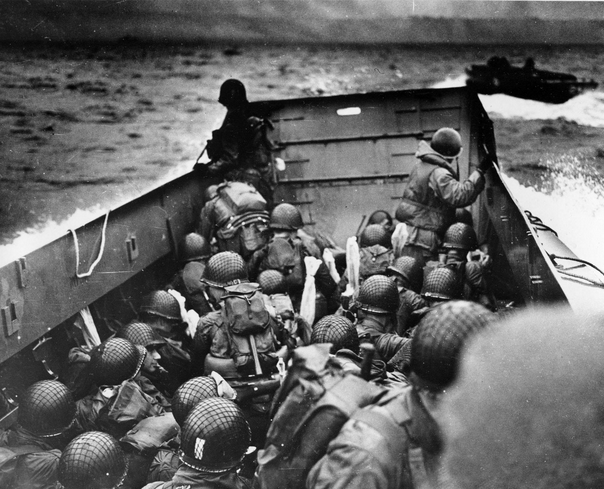
Au cours des jours suivants, les forces du Commonwealth firent face a des contre-attaques déterminées pour contrôler la tête de pont. Plus de 750 des soldats qui sont enterrés ou dont la mémoire est honorée ici furent tués le jour J et environ 600 au cours des cinq jours suivants. Les navires amenant les renforts, l'approvisionnement et le matériel étaient toujours menacés par le mauvais temps et les attaques ennemies. Parmi ceux dont la mémoire est honorée sur le Mémorial se trouvent près de 200 hommes disparus lorsque le MV Derrycunihy coula au large de Sword Beach le 24 juin 1944 au matin après avoir heurté une mine allemande larguée par la Luftwaffe au cours de la nuit. La plupart de ces hommes faisaient partie du régiment de reconnaissance blindé que la 43e division (Wessex).
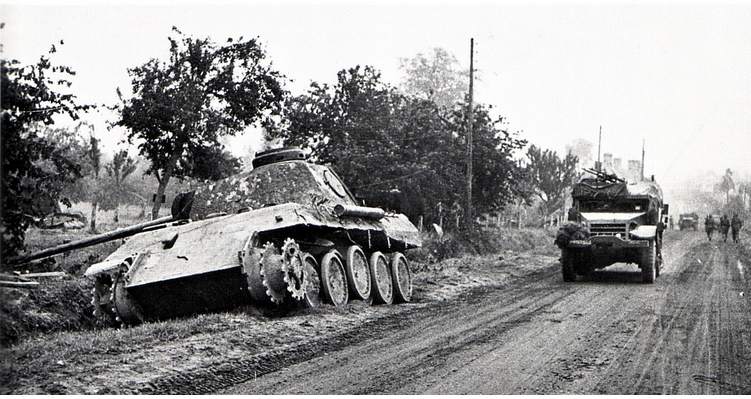
Après avoir pris le contrôle de la tête de pont, les forces du Commonwealth commencèrent à avancer vers Caen, on se livrant à des batailles acharnées dans les villages, les fermes et le bocage, des chemins encaissés entre de hauts talus surmontés de haies touffues qui offraient un excellent couvert au forces allemandes qui les attendaient. Les soldats d'infanterie, les équipages des chars du Corps blindé et les artilleurs collaboraient étroitement afin d'avancer dans ce milieu difficile, et parmi les soldats qui sont enterrés ou dont la mémoire est honoré ici plus de 1300 appartenaient à des régiments blindé et d'artillerie du Commonwealth.
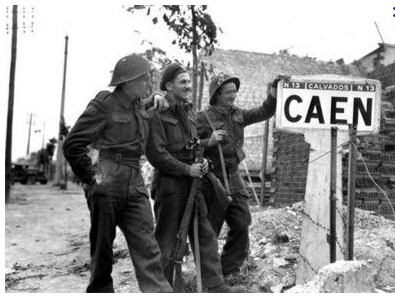
La ville de Caen fut finalement prise durant l'Opération Goodwood les 18-20 juillet, à la suite de quoi les troupes du Commonwealth poursuivirent leur attaque, soutenant les avancées américaines vers l'ouest et s'efforçant d'isoler et de détruire les forces allemandes. Parmi les soldats qui sont enterrés ou dont la mémoire est honorée ici plus de 1000 perdirent la vie au cours des deux premières semaines d'août. Leurs camarades qui tombèrent en juillet et en août par milliers reposent ailleurs, et notamment dans le cimetière militaire de Banneville-la-Campagne près de CAEN.
A tout Jamais : Faites le calcul suivant en fonction de la phrase que vous avez devant vous :
Soit A = Nombre de lettres du premier mot
Soit B = Nombre de lettres du deuxième mot
Soit C = Nombre de lettres du quatrième mot
N 49° 16. CAB
W 000° 42.(A+B)B(A-B)
Note : La balise vous transmet les informations pour trouver la cache finale, vous pouvez entrer ces informations dans le cheker pour obtenir un indice supplémentaire

Venez passer un moment agréable avec nous sur Facebook en cliquant sur l'image ci-dessous:




The cemetery contains the graves of 4,648 soldiers who fell during the Second World War. The dead were brought back to this cemetery (the largest British military cemetery in France) from all the surrounding areas.

On 6 June 1944, the Alies landed on the coast of Normandy British units reached the outskirts of Bayeux by nightfalL and on the following day the city became the first in France to be lberated. Medical facilities were quickly established nearby to treat men wounded in the fighting, and the British army constructed a ring road around the city The road alongside the cemetery is Boulevard Fabian Ware, named after the founder of the War Graves Commission.

This is the largest Commonwealth cemetery of the Second World War in France. It contains the graves of men originally buried on the battlefields, and those who died in Bayeux military hospitals Begun during the war, it was completed in 1952 and is now the final resting place of more than 4.100 Commonwealth servicemen, of whom nearly 340 remain unidentified. Also buried here are some 500 servicemen of other nations, including more than 460 Germans.

Opposite the cemetery stands the Bayeux Memorial which names of more than I,800 men and women of the bears the Commonwealth land forces who fell during Operation Overlord and have no known grave They died during the landings the intense fighting in Normandy and in the advance to the River Seine in August 1944. Both the cemetery and the memorial were designed by Philip Hepworth The Latin inscription reads: "We, once conquered by William, have now set free the Conqueror's native land ».
Operation Overlord: the Battle of Normandy

Commonwealth forces came ashore on Gold, juno and Sword beaches in the early morning of D-Day through rough seas and over heavy sands, supported by a mighty banrage from warships. rockets fired by landing craft and bombing by air forces above. The first waves of assault troops faced barbed wire, beach obstacles, mines, and machine-guns sited in seafront properties and concrete pillboxes. Once they had battled their way off the beaches infantry soldiers and tanks fought from house to house in seaside towns and pushed inland during the warm afternoon. By nightfall more than 156,000Allied servicemen were on French soil Around 13,000 landed from the sea, uf whom some 75,000 were Commonwealth troops.

Over the days that fodowed. Commonwealth forces faced determined counter-attacks while they fought to secure the d. More than 750 of those buried or commemorated here died on D-Day, and some 600 over the following five days vessels bringing reinforcements supplies and machinery continued to be threatened by bad weather and enemy attacks. Among those commemorat ed on the memorial are nearly 200men lost when the MV Demycunihy sank off Sword Beach on the morning of 24 june 1944 after striking a German mine dropped by the Luftwaffe during the night Most were members of the 43rd (Wessex) Division's armoured reconnaissance regiment.

Once the bridgehead was secure, Commonwealth forces began to advance on Caen, fighting fierce battles among the villages, farmland and bocage: sunken lanes with high banks topped by thick hedges which provided excellent cover for the German of the Armoured Corps forces awaiting them. Infantry, tank crews and artillerymen worked closely together to advance through more than 1300 of those buried this difficult environment, and commemorated here fought with Commonwealth tank and artillery regiments.

Caen was finally secured during Operation Goodwood on 18.20 July, after which Commonwealth troops continued to attack. supporting American advances to the west and attempting isolate and destroy German forces. More than I 000 of those commemorated here died in the first two weeks of buried or August. Thousands more of their comrades who fell during the fighting in uly and August would be laid to rest elsewhere. including Banneville la Campagne War Cemetery near Caen.

Have a nice time with us on Facebook by clicking on the image below:




Auf diesem Friedhof befinden sich die Gräber von 4.648 Soldaten, die während der Kämpfe des Zweiten Weltkriegs gefallen sind. Alle Toten aus den umliegenden Gebieten wurden ebenfalls zu diesem Friedhof (den größten britischen Soldatenfriedhof in Frankreich) gebracht und hier bestattet.

Am 6. Juni 1944 landeten die Alliierten Truppen an der Küste der Normandie. Britische Einheiten erreichten bei Dunkelheit die Vororte von Bayeux, und am nächsten Tag konnte diese Stadt als Erste in Frankreich befreit werden. Umgehend wurde eine medizinische Versorgung eingerichtet, um die bei den Kämpfen Verwundeten behandeln zu können, und die Britische Armee errichtete eine Ringstraße um die Stadt. Die Straße entlang des Friedhofs heisst Boulevard Fabian Ware, benannt nach dem Begründer der Commonwealth War Graves Commission (CWGC), Sir Fabian Arthur Goulstone Ware.

Bayeux War Cemetery ist der größte Commonwealth Friedhof des Zweiten Weltkriegs in Frankreich. Hier befinden sich die Gräber von Soldaten, die zunächst auf dem Schlachtfeld begraben worden waren, und von jenen, die in den Militärkrankenhäusern von Bayeux an ihren Verletzungen gestorben sind. Der Bau wurde noch während des Kriegs begonnen und im Jahr 1952 fertiggestellt. Hier befindet sich die letzte Ruhestätte von mehr als 4100 Commonwealth Soldaten, von denen 340 nicht identifiziert werden konnten, von weiteren 500 Soldaten unterschiedlicher Nationalität sowie von über 460 Deutschen.

Auf der dem Friedhof gegenüberliegenden Seite liegt das Bayeux Memorial. Auf diesem Denkmal befinden sich die Namen von 1.800 Männern und Frauen der Landstreitkräfte des Commonwealth, die bei der Operation Overlord gefallen sind und deren Gräber nicht bekannt sind. Sie verloren ihr Leben während der schweren Kämpfe bei der Landung der Truppen in der Normandie und beim Vormarsch zur Seine im August 1944. Friedhof und Denkmal wurden von Philip Hepworth entworfen. Die lateinische Inschrift bedeutet. „Einst wurden wir von William erobert, und jetzt haben wir das Heimatland des Eroberers befreit!“
Operation Overlord: die Schlacht in der Normandie

Die Truppen des Commonwealth landeten am frühen Morgen des D-Days bei stürmischer See an den Küstenabschnitten Gold, Juno und Sword. Unterstützt wurden sie von einer großen Anzahl von Kriegsschiffen und den Luftstreitkräften. Die erste Welle der alliierten Truppen stieß auf Barrieren aus Stacheldraht, Minenfelder am Strand und schweren Beschuss aus Maschinengewehren aus Bunkern und Geschützstellungen. Infanteriesoldaten und Panzerbesatzungen erkämpften sich ihren Weg über den Strand, von einem Haus zum nächsten, und drangen bis zum Nachmittag in die küstennahen Städte vor. Bis Einbruch der Nacht waren mehr als 156.000 alliierte Soldaten auf französichem Boden gelandet. Etwa 130.000 von ihnen, darunter 75.000 Commonwealth Soldaten, waren auf dem Seeweg gekommen.

In den folgenden Tagen waren die Commonwealth-Truppen heftigen Gegenangriffen ausgesetzt. Mehr als 750 der Soldaten, die hier begrabenen liegen oder derer hier gedacht wird, starben am D-Day, und weitere 600 fielen in den darauffolgenden 5 Tagen. Schiffe die Verstärkung und Nachschub an Material und Maschinen brachten mussten gegen schlechtes Wetter und feindliche Angriffe ankämpfen.Von den Soldaten, derer am Denkmal gedacht wird, verstarben annähernd 200, als das Schiff MV Demycunihy am 24. Juni 1944 in der Nacht vor der Sword Küste auf eine Seemine auffuhr, dir dort von der deutschen Luftwaffe abgeworfen worden war. Die meisten von ihnen waren Soldaten der 43. (Wessex) Infanterie Division.

Nachdem der Küstenabschnitt gesichert war, stießen die Commonwealth-Truppen Richtung Caen vor. Es kam zu heftigen Gefechten in den Dörfern, auf Bauernhöfen und auf dem Land. Die tieferliegenden Straßen, wie Hohlwege eingefasst zwischen hohen Dämmen, mit dichten Hecken bewachsen, gaben den deutschen Truppen eine perfekte Deckung für Angriffe aus dem Hinterhalt. Infanterie, Panzerkorps und Artillerie arbeiteten in diesem schwierigen Umfeld eng zusammen um ihren Vorstoß weiterzuführen. Mehr als 1.300 Soldaten, die hier begraben liegen oder derer hier gedacht wird, kämpften in den Commonwealth Panzer- und Artillerieregimenten.

Caen wurde schließlich während der Operation Goodwood vom 18. bis 20. Juli 1944 befreit. Die Commonwealth-Truppen setzten ihre Angriffe fort und unterstützen die Amerikanischen Vorstöße, die Deutschen Truppen zu isolieren und zu zerstören. Mehr als 1.000 Soldaten, derer hier gedacht wird, starben in den ersten beiden Augustwochen. Weitere 1.000 Kamerden die in den Kämpfen im Juli und August gefallen waren, wurden an anderen Orten begraben, etwa auf dem Militärfriedhof von Banneville-la-Campagne in der Nähe von Caen.
Führe nun, basierend auf dem Satz, der vor Dir steht, folgende Berechung durch, um die Koordinaten für das Cacheversteck zu erlangen:
A = Anzahl der Buchstaben des ersten Wortes
B = Anzahl der Buchstaben des zweiten Wortes
C= Anzahl der Buchstaben des vierten Wortes
N 49 ° 16. C A B
W 000 ° 42. (A+B) B (A-B)
Hinweis: Via Chirp erhältst du eine Information, die dir hilft, den Cache zu finden.
Du kannst diese Information in den Checker eingeben, um einen zusätzlichen Hinweis zu bekommen.

Genissen Sie Ihre Zeit mit uns auf Facebook durch das Bild unten klicken:


